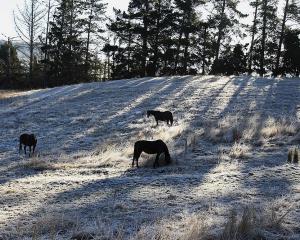Dunedin has again shown its southern city position should not be equated with miserable winter weather - the city had its warmest June yet and was the sunniest and driest of the country's six main centres.
While much of New Zealand experienced gloomy skies and heavy rain, Dunedin recorded 105 hours of sunshine, 121% of normal, and only 22mm or 30% of its normal rainfall, the National Institute of Water and Atmospheric Research (Niwa) June climate summary reported.
Climate scientist, Georgina Griffiths, said nationally it was the third warmest June on record, with the average temperature 10degC, 1.5% above the 1971 to 2000 June average.
Dunedin followed that trend, recording its highest recorded mean temperature of 8.6degC, 1.5degC above normal. The city also recorded its highest minimum temperature of 12.2degC on June 1.
Elsewhere in Otago, Balclutha recorded its equal fourth-highest daily minimum temperature of 9.4degC, also on June 1.
Alexandra recorded its third-lowest June rainfall of 6mm, 21% of normal, and its second-highest daily maximum temperature of 20.2degC on June 27.
Ranfurly, however, recorded the lowest temperature nationally of -6.7degC on June 17.
Despite Otago's skifields still waiting for substantial snow, the warm and dry conditions in Queenstown and Wanaka did not break any records.
The mean temperature in Queenstown was 4.9degC, 1.3degC above normal, and in Wanaka 5.4degC, 1.6degC above normal. Rainfall in the two towns was also low, with Queenstown receiving only 32mm, 48% of its June normal, and Wanaka 22mm, 44% of normal.
The warm, dry weather could be about to end with MetService predicting an active cold front will sweep eastwards across the country tomorrow and Friday, followed by cold southwesterlies.
The cold southwest flow behind the front was likely to bring snow to the ranges of both islands, it said.
Snow was likely to fall to low levels in Southland and Fiordland.







